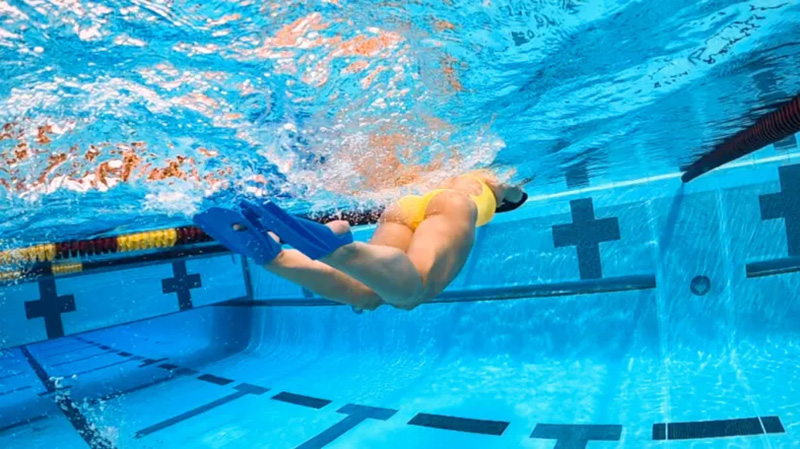Breathing is essential for all swimming strokes, but it is especially important for the butterfly stroke. The butterfly stroke is a complex and demanding stroke that requires swimmers to coordinate their arms, legs, and breathing in a precise sequence. Proper breathing technique is essential for maintaining stroke efficiency, preventing fatigue, and achieving peak performance.
This article will discuss the critical role of breathing in the butterfly stroke, the importance of mastering the techniques, and specific training strategies for improving breathing efficiency. Swim Time Log will also cover common challenges and safety considerations related to th technique.
Importance of Mastering Breathing in Butterfly Stroke
The butterfly stroke is a very demanding stroke for the respiratory system. The swimmer’s head is out of the water for only a brief moment during each arm cycle, which means that they need to be able to inhale and exhale quickly and efficiently. Additionally, the butterfly stroke requires a lot of energy, which can lead to fatigue and breathlessness.

Proper breathing technique can help swimmers overcome these challenges and improve their performance. By developing a consistent breathing rhythm and timing, swimmers can ensure that they are getting enough oxygen to support their swimming. Head positioning and movement are also important factors in effective butterfly stroke breathing. Swimmers should avoid lifting their heads too high out of the water, as this can disrupt their stroke rhythm and cause fatigue.
Bilateral breathing, or breathing on both sides of the body, is another important technique for swimmers. Bilateral breathing allows swimmers to take in more oxygen and recover more quickly between strokes.
Techniques and Training
There are a number of specific techniques and drills that swimmers can use to improve their butterfly stroke breathing. One important technique is to develop a consistent breathing rhythm and timing. Swimmers can do this by practicing breathing every two or three arm strokes. It is also important to avoid lifting the head too high out of the water. Swimmers should aim to keep their chins tucked in and their heads in line with their spines.
Another important technique is to use bilateral breathing. Bilateral breathing can be practiced by alternating breathing on the left and right sides of the body. Swimmers can start by practicing bilateral breathing for short distances and gradually increasing the distance as they become more comfortable.
Here are some specific drills and exercises that swimmers can use to improve their breathing:
- Butterfly breathing with fins: Swim butterfly with fins to help you focus on your breathing technique. You can check our website for quality fin products: CAPAS Snorkel Fins

You Consider Using Fins to Help in Your Trainning - Butterfly breathing with a pull buoy: Swim butterfly with a pull buoy to help you isolate your arms and focus on your breathing technique.

Put the Pull Buoy between your Thighs to Help with the Kicking Motion so You can Focus on the Breathing Technique - Butterfly breathing ladder: Swim a ladder of 25-yard butterfly repeats, alternating between one-sided breathing and bilateral breathing. You can check out this technique here.
In addition to practicing drills and exercises, swimmers can also improve their breathing by enhancing their lung capacity and endurance. This can be done by doing regular cardio workouts and swimming workouts that focus on endurance.
Overcoming Challenges and Safety Considerations
Here are some tips for overcoming common challenges related to butterfly stroke breathing:
- Dealing with breathlessness and fatigue: If you are feeling breathless or fatigued during your butterfly swims, try slowing down your pace and focusing on your breathing technique. You can also try taking shorter breaths.
- Common difficulties: Some common difficulties that butterfly stroke swimmers experience with breathing include lifting the head too high out of the water, breathing too deeply, and not breathing regularly. To overcome these difficulties, practice the drills and exercises mentioned above.
- Safety considerations: It is important to monitor your breath and listen to your body during butterfly swims. If you are feeling lightheaded or dizzy, stop swimming immediately.
Conclusion
Proper butterfly stroke breathing is essential for achieving peak performance. By mastering breathing techniques and training regularly, swimmers can improve their lung capacity, endurance, and breathing efficiency. This will lead to stronger butterfly strokes and faster swimming times.
AUTHOR
Sang Nguyen
Sang Nguyen is a former national swimmer for Vietnam who has transitioned into coaching. With a passion for fostering a healthy swimming community and connecting like-minded individuals,......Read More
BLOG
Maybe You Are Interested
Nutrition for Swimmers Guide: Maximizing Performance
Swimming demands not only physical prowess but also a strategic nutritional approach to maximize performance....
Crafting a Nutrition Plan for Competitive Swimmers
In the competitive world of swimming, nutrition plays a pivotal role in an athlete’s performance...
A Comprehensive Guide to Maximum Performance Nutrition for Swimmers
Swimming is not just about technique and training; nutrition plays a pivotal role in a...
Essential Swim Nutrition Tips for Peak Performance
Swimming is a highly demanding sport, requiring a combination of technique, strength, and endurance. But...
Expert Sports Nutrition Advice for Swimmers
In the competitive world of swimming, nutrition and training are as crucial as the technique...
The Synergy of Swimming and Nutrition: Balancing Intake for Optimal Water Performance
The Synergy of Swimming and Nutrition: Balancing Intake for Optimal Water Performance dives into the...